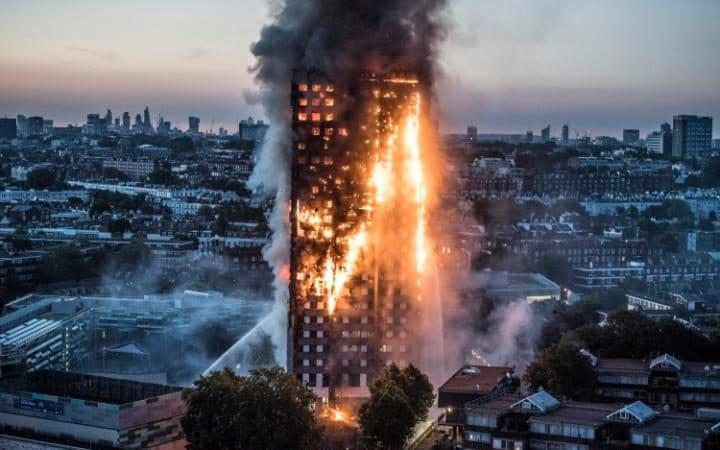By Ben Kerrigan-
A senior firefighter who arrived at the blaze just before 2am has told the Greenfell fire inquiry of the conflicting messages residents were inadvertently subjected to by the inconsistent instructions they were given. He told the inquiry he thought the residents should have been evacuated long before they were.
The inquiry was hearing testimonies from Daniel Egan, a senior fire safety officer with the London fire brigade. He told how he arrived at the fire at 1.58am and immediately thought “we need to get people out of the building.”
“It looked like a film, people were shouting and screaming, they were panicking and wanting people to help,” he said. “My first thoughts were that we needed to get everybody out. I could hear the roar of the tower. It was obvious … you could hear people screaming … it was just so obvious, sorry.”
The “stay put” policy wasn’t abandoned until 2.47am, after which residents calling 999 who had been told to stay in their flats were told to try and evacuate. Dozens of people who did not evacuate lost their lives.
“By no stretch of the imagination would it have been a simple task to do,” Egan said, but “the firefighters would’ve been more than willing I’m sure to do everything that was necessary,” he told the inquiry into the deaths of 72 people following the fire on 14 June 2017.
Egan said he did not express his view to senior officers because “I made an assumption the officer in charge has got this in control”. The inquiry also shockingly heard that firefighters were being sent in to evacuate people whose lives were at risk, whilst at the same time other residents were being told to stay put. The revelations highlighting an alarming state of contradictions shows a state of confusion and lack of professionalism by the fire fighting department.
Firefighter Justin O’Beirne described how he directed two colleagues to the 16th floor to try and rescue Joseph Daniels, a bed-bound 69-year-old with dementia. They had been alerted by his son, Samuel Daniels, who was leaving the building by the single smoke-logged staircase but could not get his father to come with him. The two firefighters were unable to rescue him because the heat and smoke was so intense, O’Beirne told the inquiry. Daniels died in his flat.
O’Beirne said whe logged the details of firefighters in breathing apparatus who went up the burning building to try and save people in specific flats, including Debbie Lamprell in flat 161 on floor 19, Raymond Bernard in flat 201 and Saber Neda in flat 205 on the 23rd floor, all of whom died.
O’Beirne explained his awful experience on the 12th floor when he saw a woman coming out suffering from smoke inhalation. There was thick black smoke with “absolutely zero” visibility but he didn’t radio down to the incident commander, Michael Dowden, or radio down for firefighters in breathing apparatus to come up urgently, the inquiry heard.
Asked about whether he thought the fire was spreading upwards and the stay put policy was now in question, he said “that was the feeling I was getting”.
“Did you have any thoughts along the lines of well now we need a strategy in order to rescue and remove all the occupants of the flats above level 12?” asked Richard Millett QC, counsel to the inquiry.
“I would say that decision would be for someone above my rank to clear the rest of the building,” O’Beirne replied.
When the stay put policy was changed to evacuation, O’Beirne said senior officer Patrick Goulbourne told him to get all the firefighters out of the building.
“He came up to me and said ‘get everyone out. Radio it from me and get everyone out now’.”




